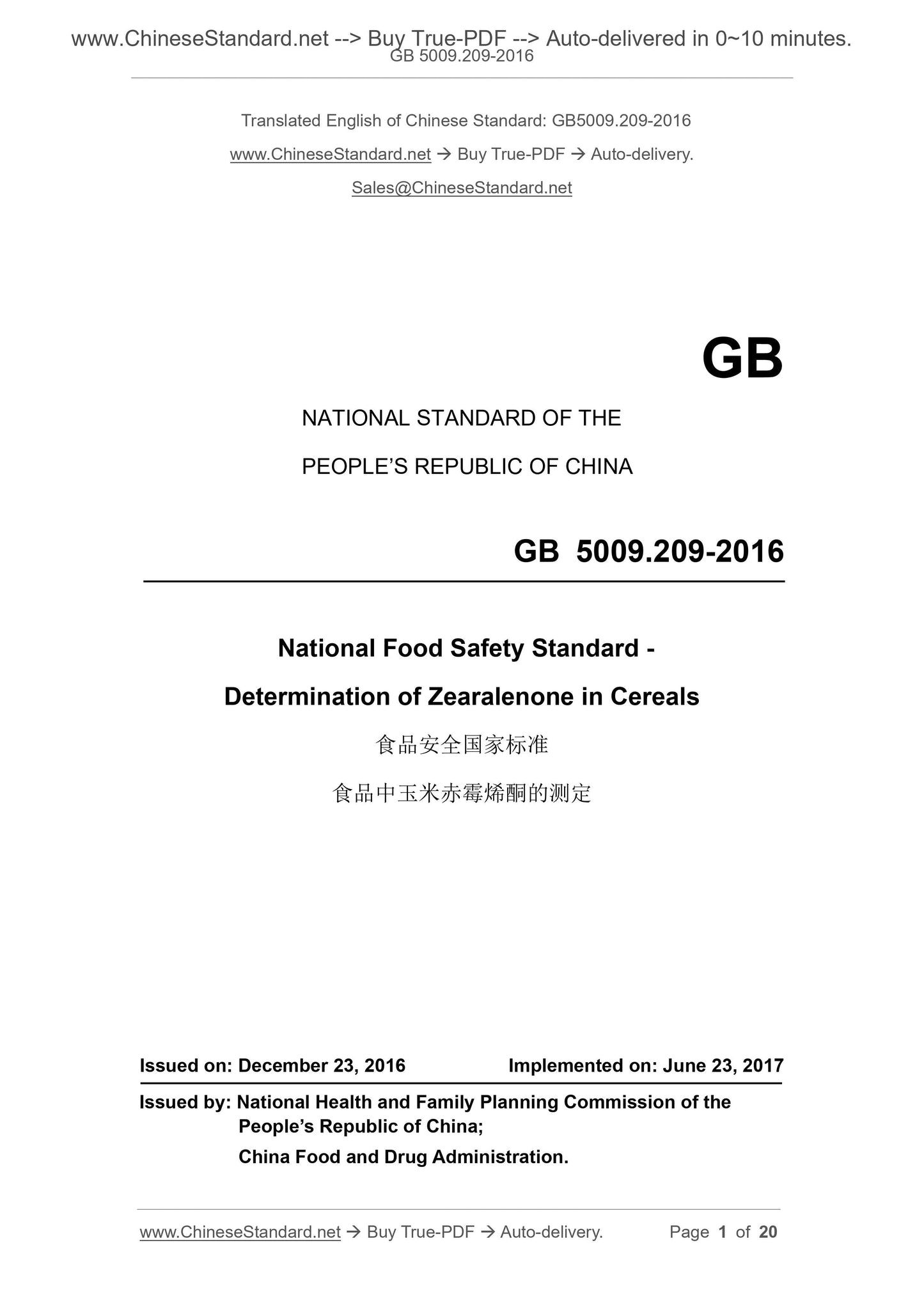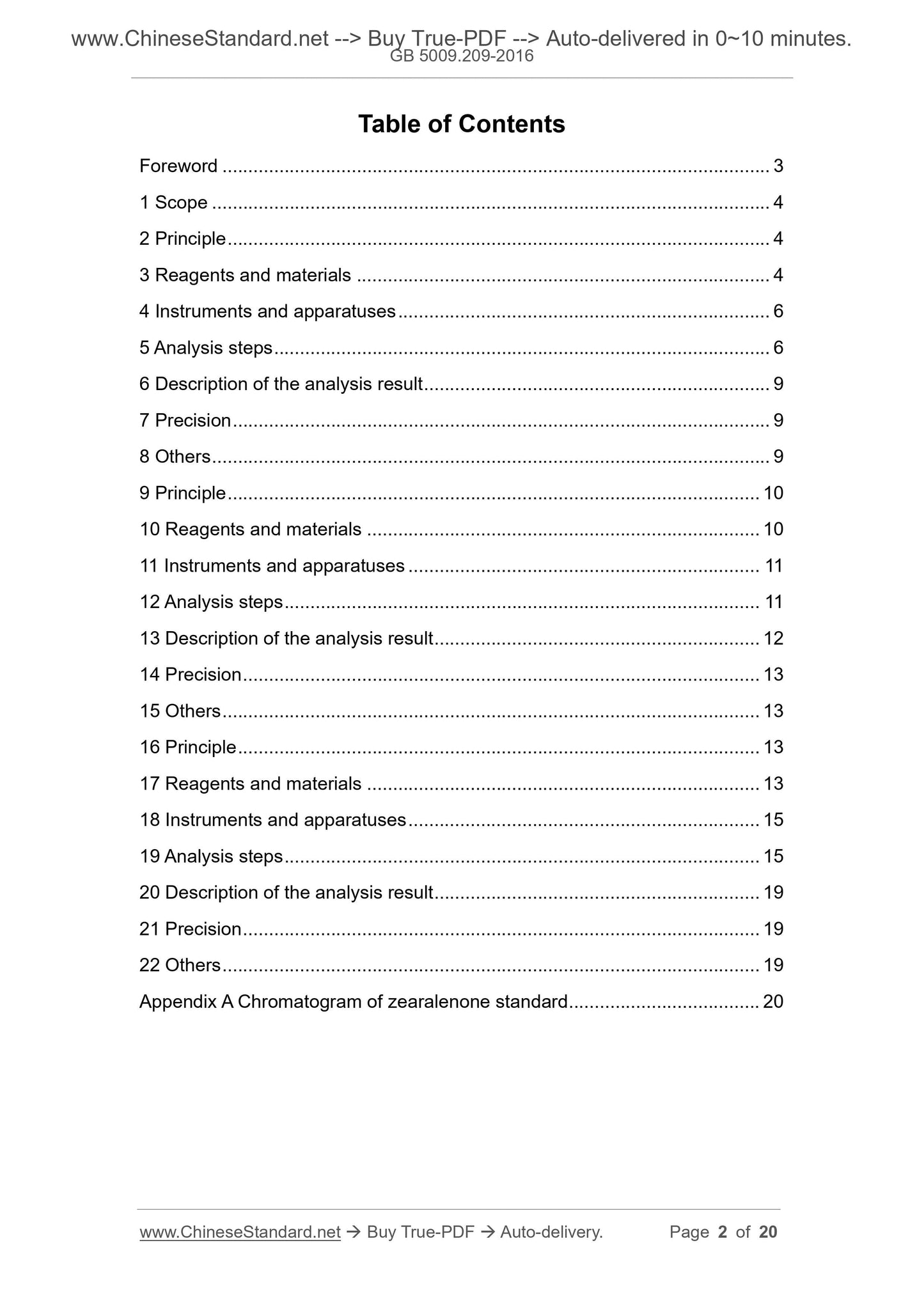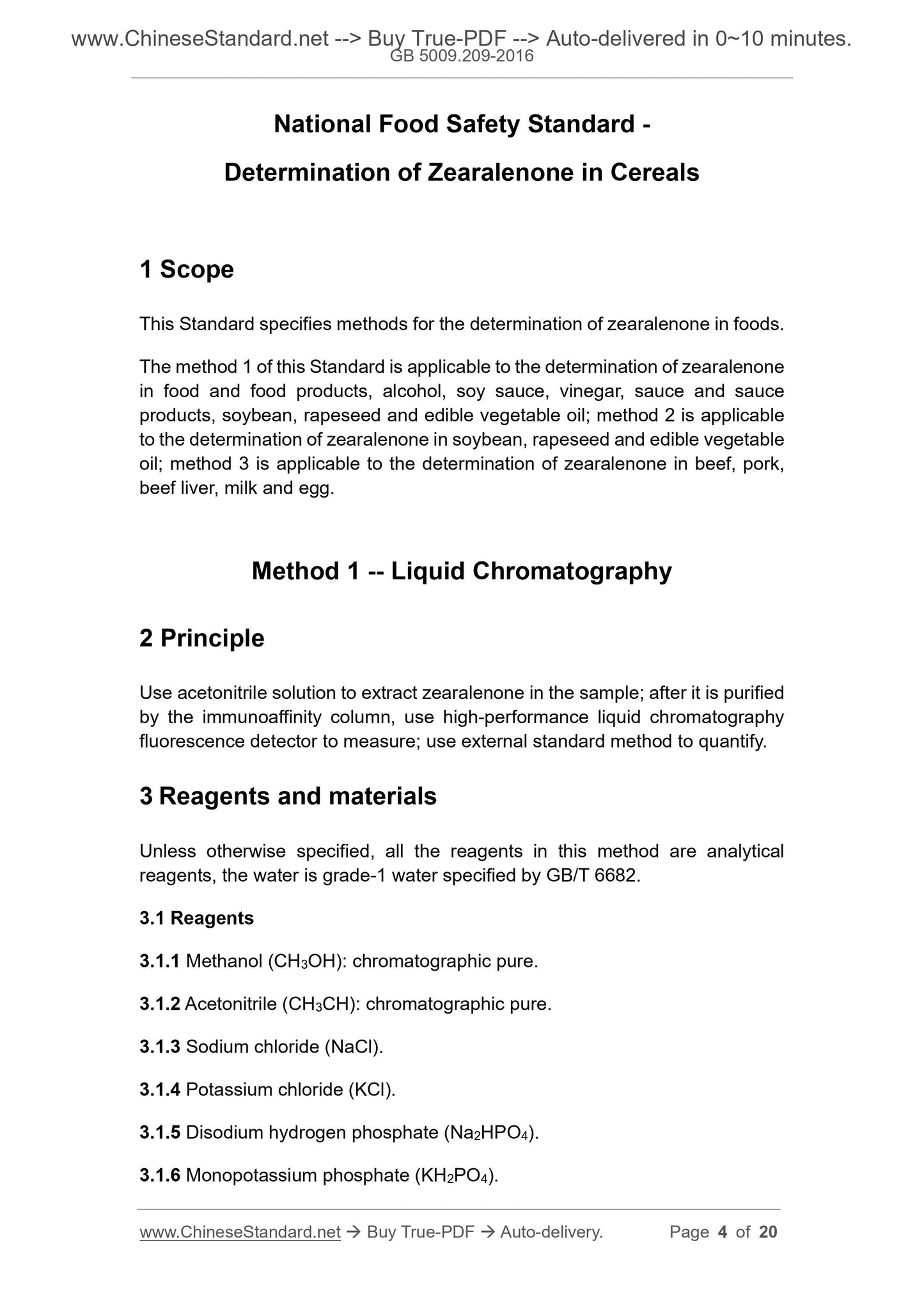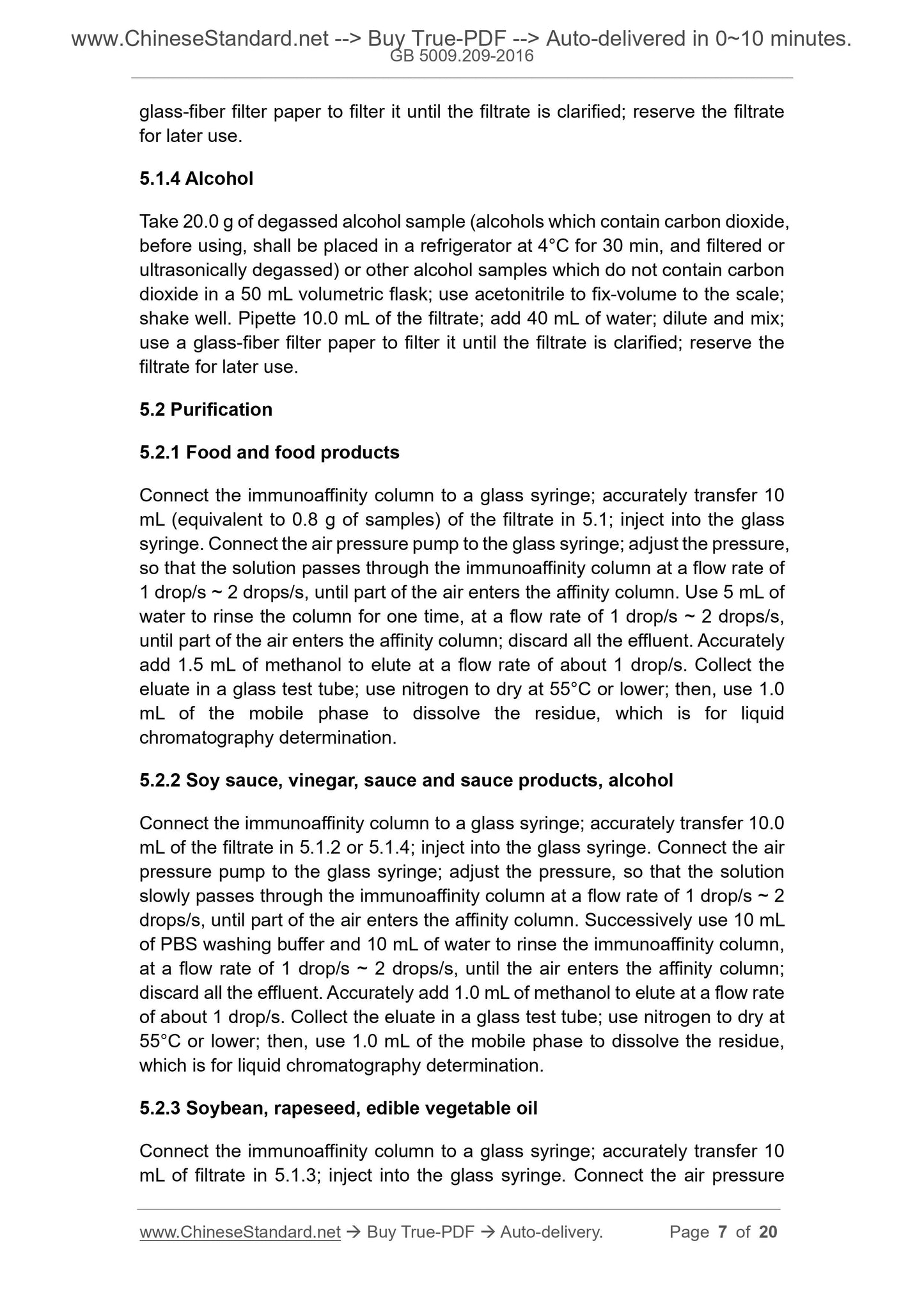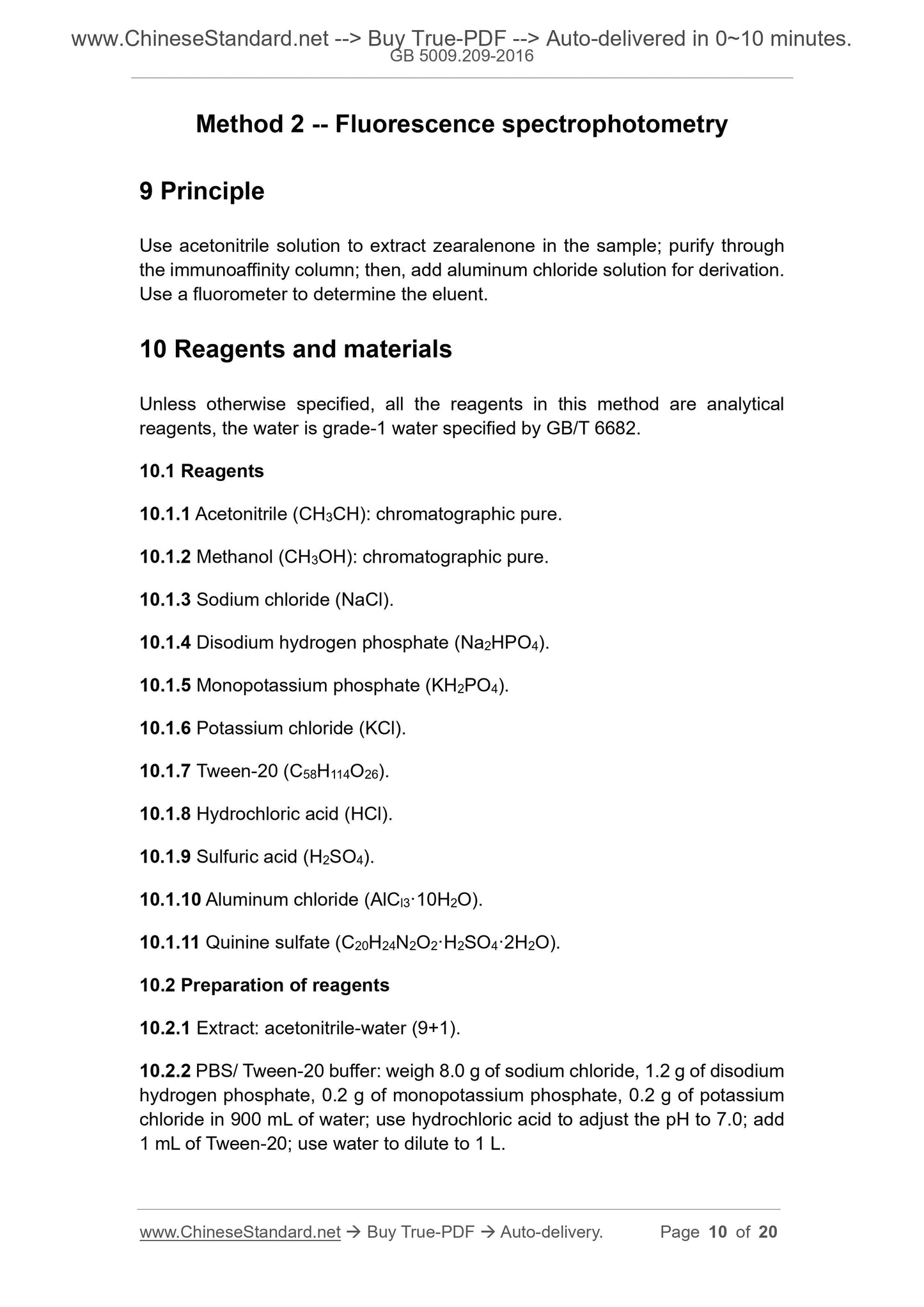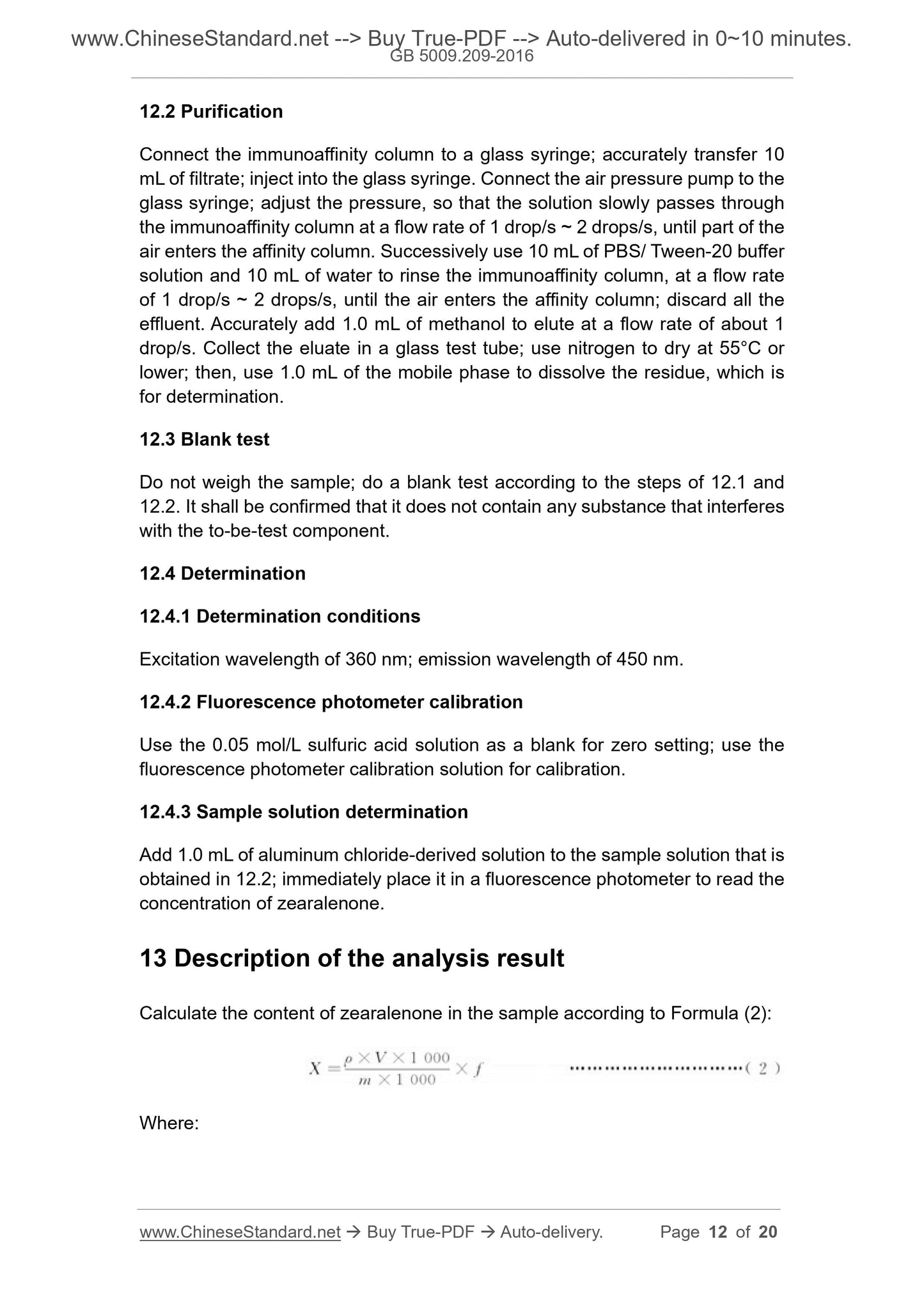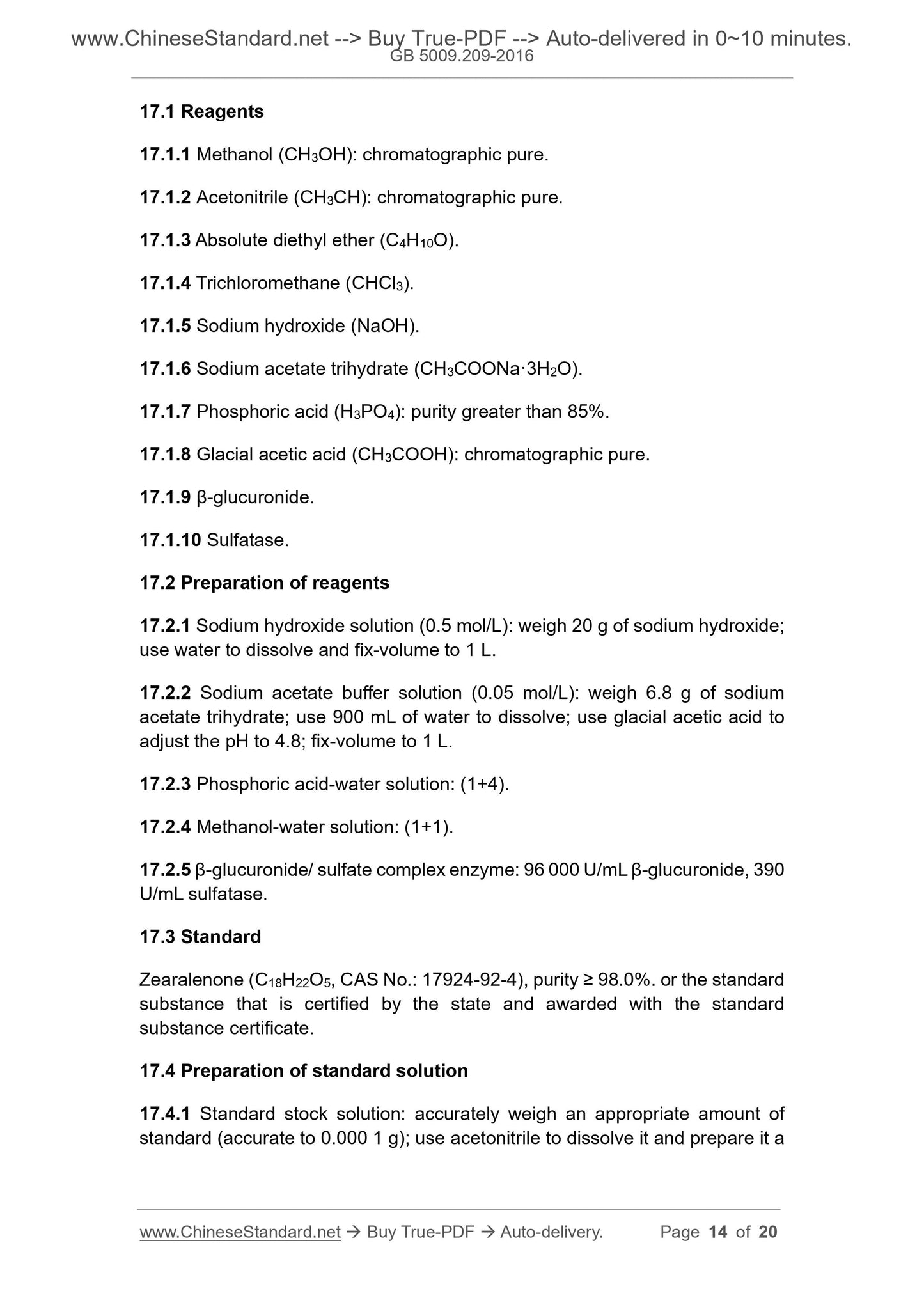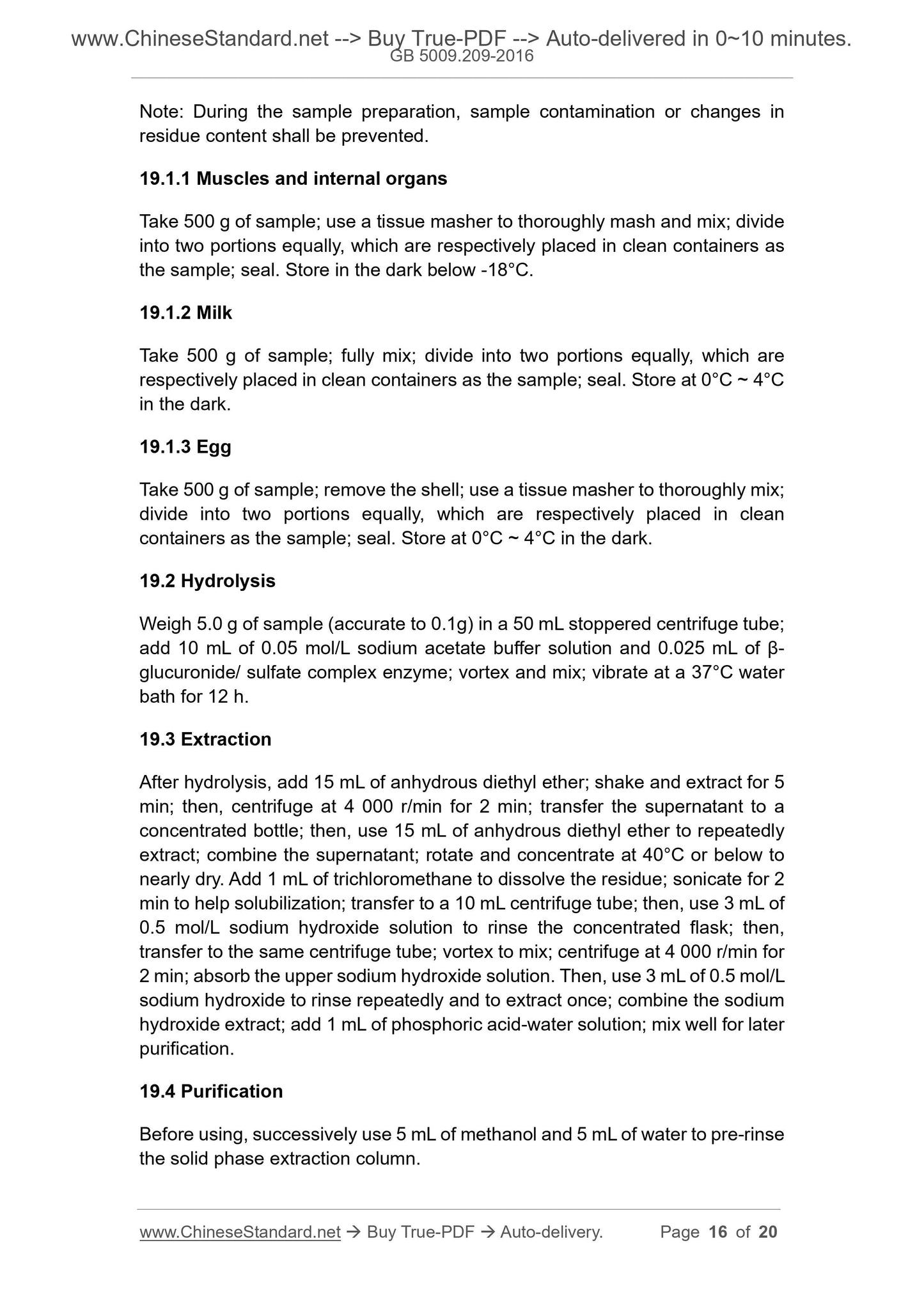1
/
of
8
www.ChineseStandard.us -- Field Test Asia Pte. Ltd.
GB 5009.209-2016 English PDF
GB 5009.209-2016 English PDF
Regular price
$150.00
Regular price
Sale price
$150.00
Unit price
/
per
Shipping calculated at checkout.
Couldn't load pickup availability
GB 5009.209-2016: National food safety standard - Determination of Zearalenone in Cereals
Delivery: 9 seconds. Download (and Email) true-PDF + Invoice.Get Quotation: Click GB 5009.209-2016 (Self-service in 1-minute)
Newer / historical versions: GB 5009.209-2016
Preview True-PDF
Scope
This Standard specifies methods for the determination of zearalenone in foods.The method 1 of this Standard is applicable to the determination of zearalenone
in food and food products, alcohol, soy sauce, vinegar, sauce and sauce
products, soybean, rapeseed and edible vegetable oil; method 2 is applicable
to the determination of zearalenone in soybean, rapeseed and edible vegetable
oil; method 3 is applicable to the determination of zearalenone in beef, pork,
beef liver, milk and egg.
Method 1 -- Liquid Chromatography
Basic Data
| Standard ID | GB 5009.209-2016 (GB5009.209-2016) |
| Description (Translated English) | National food safety standard - Determination of Zearalenone in Cereals |
| Sector / Industry | National Standard |
| Classification of Chinese Standard | C53 |
| Word Count Estimation | 14,169 |
| Date of Issue | 2016-12-23 |
| Date of Implementation | 2017-06-23 |
| Older Standard (superseded by this standard) | GB/T 21982-2008; GB/T 23504-2009; GB/T 5009.209-2008; SN/T 1745-2006; SN/T 1772-2006 |
| Regulation (derived from) | National Health and Family Planning Commission Notice No.17 of 2016 |
| Issuing agency(ies) | National Health and Family Planning Commission of the People's Republic of China, State Food and Drug Administration |
Share
